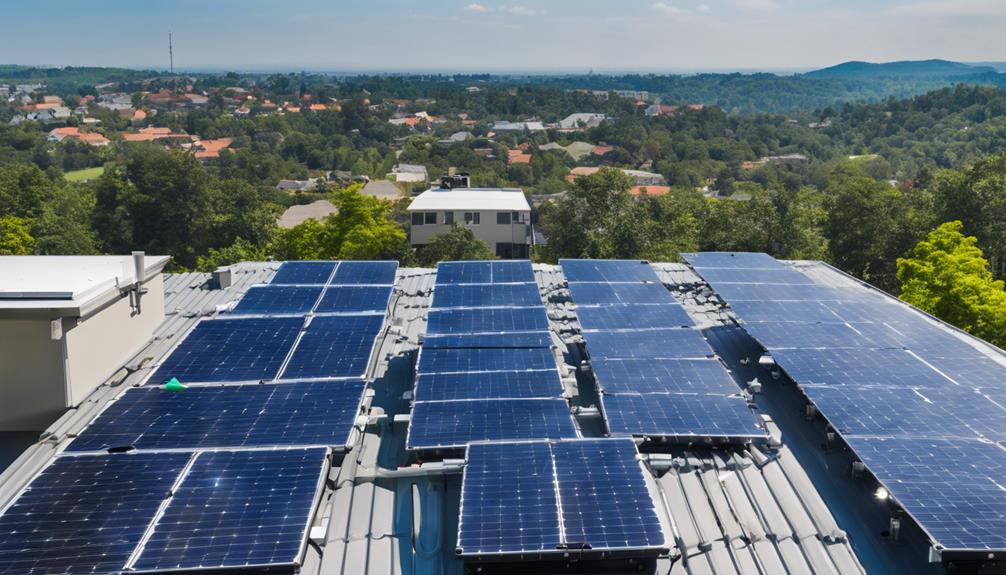
What Are Transparent Solar Cells?
Transparent solar cells are a groundbreaking technology that merges the functionality of traditional solar panels with aesthetic appeal. Unlike conventional solar panels, which are opaque and often considered unsightly, transparent solar cells can be integrated into windows, facades, and other surfaces without obstructing light or visibility. These cells work by capturing sunlight and converting it into energy while allowing visible light to pass through. This innovation not only enhances the energy efficiency of buildings but also opens up new possibilities for sustainable architecture and urban design.
How Do Transparent Solar Cells Work?
Transparent solar cells operate on the same basic principle as traditional photovoltaic cells: they convert sunlight into electricity. However, their design incorporates special materials that selectively absorb specific wavelengths of sunlight, primarily ultraviolet (UV) and infrared (IR) light, while allowing visible light to pass through unimpeded. This is achieved using organic and inorganic compounds that can be layered onto surfaces to create a thin, transparent film. The energy absorbed from UV and IR light is then converted into electricity, which can be used to power devices or stored in batteries for later use.
The Benefits of Transparent Solar Cells
The advantages of transparent solar cells are numerous and compelling. Firstly, they can dramatically improve the energy efficiency of buildings without sacrificing aesthetics. By integrating these cells into windows and facades, architects can create structures that generate their own power while maintaining natural lighting. This technology also promotes sustainability, as it reduces reliance on fossil fuels and lowers carbon footprints. Additionally, transparent solar cells can provide energy savings, as buildings equipped with this technology can reduce electricity costs over time.
Applications of Transparent Solar Cells in Modern Architecture
Transparent solar cells are revolutionizing modern architecture by enabling the design of energy-efficient buildings. These cells can be seamlessly integrated into various building materials, such as glass and plastic, allowing for multifunctional spaces that harness solar energy. For instance, skyscrapers can have transparent solar panels on their windows, turning the entire building into a vertical solar farm. Moreover, transparent solar cells can be used in smart windows that adjust their tint based on sunlight exposure, enhancing energy efficiency and comfort for occupants. As cities continue to grow and the demand for sustainable solutions increases, the application of transparent solar cells will become essential.
Challenges Facing Transparent Solar Cell Technology
Despite their promising potential, transparent solar cells face several challenges that hinder widespread adoption. One of the primary issues is the efficiency of energy conversion. Current transparent solar cell technologies typically convert only a fraction of the sunlight they absorb into usable energy, making them less efficient compared to traditional solar panels. Additionally, the production costs of these cells can be high, limiting their application in cost-sensitive projects. Researchers are actively working to improve the efficiency and reduce the costs associated with transparent solar cells, but overcoming these hurdles will be crucial for their future success in the energy market.
Recent Advances in Transparent Solar Cell Research
Recent research has shown significant advancements in the field of transparent solar cells. Scientists are exploring new materials, such as perovskites and organic photovoltaics, to enhance efficiency and reduce production costs. Innovations in nanotechnology have also contributed to the development of more effective transparent solar cells, allowing for improved light absorption and conversion rates. Furthermore, researchers are investigating the potential for combining transparent solar cells with other renewable energy technologies, such as wind and geothermal power, to create hybrid systems that maximize energy generation and efficiency.
The Environmental Impact of Transparent Solar Cells
The environmental implications of transparent solar cells are promising. By harnessing solar energy, these cells can significantly reduce greenhouse gas emissions and reliance on fossil fuels. Moreover, integrating transparent solar cells into existing infrastructure can minimize the need for additional land for solar farms, preserving natural habitats and reducing urban sprawl. As cities continue to face challenges related to climate change and energy consumption, transparent solar cells offer a sustainable solution that aligns with global efforts to create greener urban environments.
The Future of Transparent Solar Cells in the Energy Landscape
The future of transparent solar cells looks bright as technology continues to advance. With ongoing research and development, it is expected that the efficiency and affordability of transparent solar cells will improve, making them a viable alternative to traditional solar panels. As awareness of climate change and the need for sustainable energy solutions grows, transparent solar cells are poised to play a critical role in the future of renewable energy. By seamlessly integrating with our built environment, these innovative cells will not only contribute to energy generation but also redefine how we think about sustainable design and living in urban spaces.
—
In conclusion, transparent solar cells represent a significant innovation in the renewable energy sector. Their ability to generate energy while maintaining transparency opens up new avenues for sustainable architecture and urban planning. As research progresses and challenges are addressed, the adoption of transparent solar cells is likely to increase, paving the way for a greener, more energy-efficient future. Embracing this technology will not only contribute to individual energy savings but also support global efforts to combat climate change, making transparent solar cells an essential component of our energy landscape.





